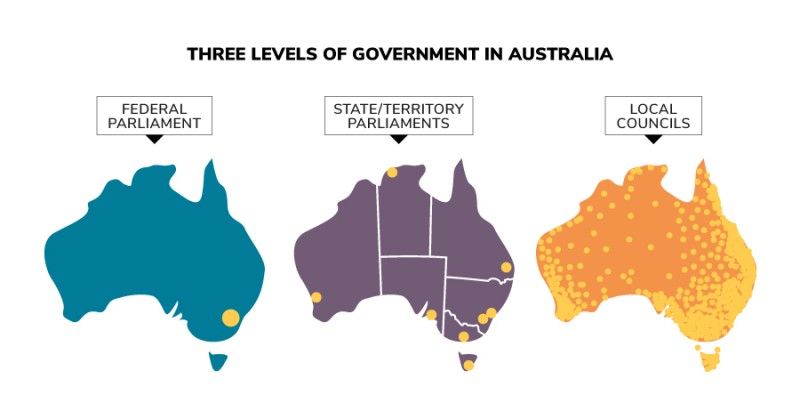Why is it important that a federal law can invalidate a state law and not the other way around?
Hi Danielle, thanks for your question.
On 1 January 1901 the Australian colonies united to become a nation. This is known as Federation and resulted in the creation of the Australian Parliament, with the colonies becoming Australia's 6 states. Through Federation, the states transferred some of their law-making powers that related to certain areas of law-making to federal parliament. This is the reason that state laws cannot change federal laws.
On some matters the federal Parliament and the state parliaments may make laws about the same things, for example, roads and health. Section 109 the Australian Constitution states that if the federal Parliament and a state parliament pass conflicting laws on the same subject, then the federal law overrides the state law, or the part of the state law that is inconsistent with it.
The Australian Constitution describes how the High Court of Australia can resolve disagreements between the federal and state governments over their law-making powers. If a law is contested – challenged – it is up to the High Court to decide whether the Constitution gives the state or federal parliament the power to make this law.
Three levels of government in Australia.

Parliamentary Education Office (peo.gov.au)
Description
This diagram illustrates the three levels of government—the law-making bodies in Australia with three maps of Australia: Local councils (located around Australia in each local council division); State/territory parliaments (located in the capital cities of each of the 6 states and 2 territories); and federal Parliament (located in Canberra, the nation's capital).
This work is licensed under a Creative Commons Attribution-NonCommercial-NoDerivs 3.0 Unported License.
You are free to share – to copy, distribute and transmit the work.
Attribution – you must attribute the work in the manner specified by the author or licensor (but not in any way that suggests that they endorse you or your use of the work).
Non-commercial – you may not use this work for commercial purposes.
No derivative works – you may not alter, transform, or build upon this work.
Waiver – any of the above conditions can be waived if you get permission from the copyright holder.
